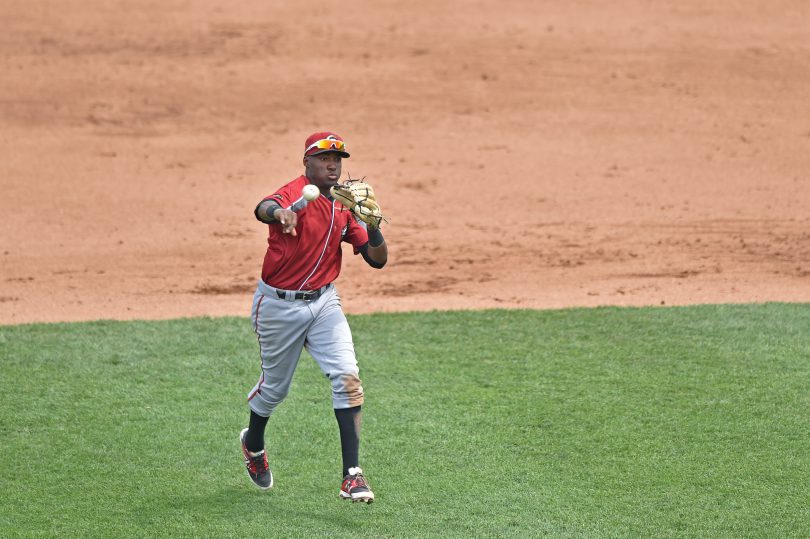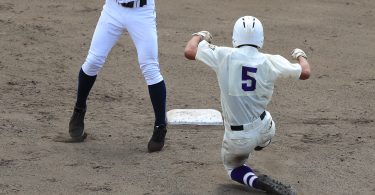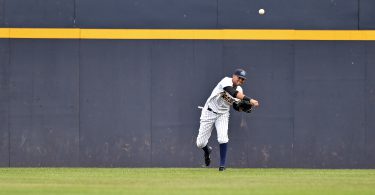The Situation:
There’s a runner at 1st in the 11th inning of a 2-2 game. The visiting team has a speedy left-handed hitter up.
The Play:
The pitcher gets the sign for a fastball in and comes set. He holds the ball for a long time, hoping the batter will tip his hand to show whether he is bunting or not. There is no sign of a bunt, and the pitcher delivers a fastball in the upper corner of the inside part of the strike zone. The hitters eyes get big and he takes a big hack at it. The velocity and location beat the bat to the spot and the hitter is jammed, hitting a little chopper to the first base side of the mound. The pitcher gathers the ball and makes a hurried throw. The ball sails up the line and past the first baseman. It hugs the brick wall tight as it rolls on the foul dirt towards the right field foul pole. The merry-go-round is on. The right fielder, who didn’t move on the original swing gives chase.
The Outcome:
The ball continues to roll down the line. The right fielder gets to it just shy of the foul pole, but as he bends over to pick it up, it hops up on him and he bobbles the ball. By the time he recovers, the batter is already touching third and being waved home. The right fielder unleashes a strong throw, but it’s too little, too late. The batter has already come around to score a Little League home run.
What Went Wrong:
There are plenty of things that go wrong here. The poor throw from the pitcher is obviously a big one, but physical mistakes happen. What we want to focus on is the right fielder, who makes a big mental mistake by failing to fulfill his responsibility on the play. Can you figure out his mistake?
In a low scoring, long game, it’s easy to get lulled to sleep on defense if you are not seeing a lot of action in the field. The problem is that every position has somewhere to be and a responsibility to fulfill on every single play. On this play, the right fielder gets caught watching the play develop instead of fulfilling his responsibility to back-up the throw to first. He needs to anticipate the bad throw before it happens, so he can be ahead of the problem instead of reacting to it as it happens. Instead of being in a quality position to intercept the ball on the wall earlier, he has to turn on to the jets to get to the ball at all. Even if he fields it cleanly on his first attempt, he is so deep that the relay will be difficult. Given the speed of the batter, he’ll likely end up scoring anyways.
As outfielders, anticipation is key. You need to anticipate where the next throw you may have to back-up will be. The left fielder in this play for example is likely to have to back-up a second throw and not the first. He will likely be covering a throw to get the lead runner should he attempt to advance to 3rd or get back picked at 2nd. The left fielder should then run towards the infield and potential back-pick at second, and then if the runner goes to 3rd, sprint to back up the potential overthrow. That’s a lot of running and thinking for a guy who will not be involved in the play if everything goes according to plan. However, when a mistake does happen, he’ll be ready and his team will benefit tremendously because of it.







